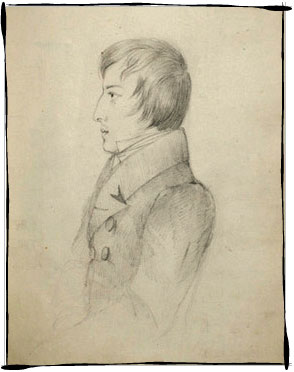



Bolero in a minor op. 19
‘It is for fleet-fingered pianists…’ That is how James Huneker assessed Chopin’s Bolero.
This work was written in Paris, during the first half of the thirties, and published in the autumn of 1834. Together with the Variations in B flat major, Op. 12, Rondo in E flat major, Op. 16 and Waltz in E flat major, Op. 18, and to some degree also the Grande Polonaise brillante, Op. 22, it belongs to the strand marked by the Parisian variety of the style brillant. It is shot through with bravura, pianistic sparkle, the refulgence of bright – at times even gaudy – sonorities. The edition was dedicated to one of his pupils, Lady Emilie de Flahault.
The Bolero takes the form of a concert dance with introduction and trio, although the sections are not very clearly distinguished. The dominant voice here belongs to the theme, the reiterations of which (in a largely unaltered form) seem also to evoke the character of a concert rondo. The middle part of the work is occupied by a series of incongruous themes, appearing in a specific configuration of keys: A major, A flat major, A major, B flat minor. The risoluto theme enters the fray with élan. A nocturne-like dolce slips by inconspicuously. The passage into the reprise of the dance’s main theme is très Chopin.
In London, the first edition was furnished with a title given by the publisher, Wessel: Souvenir d’Andalousie. At the time Chopin wrote the Bolero, he had not yet been to Spain. He would not visit that country until four years later, in 1838, and saw only Barcelona and Majorca. He could only have been familiar with Spanish music from the opera house, where it had become fashionable, like everything exotic. Although we do not know what inspired Chopin and acquainted him with Spanish music, the Spanish, or at least southern, character of this work has been noted and appreciated. Robert Schumann’s opinion might even surprise. In recommending the Bolero to Clara Wieck, he wrote: ‘this is a delicate composition, suffused with love, a picture full of southern ardour and modesty, devotion and coyness’.
This work has remained an interesting, but repertorially marginal, work. Towards the end of the nineteenth century, it became the subject of debate over its Spanishness. Frederick Niecks did not accept its supposed Spanish character and proposed a new title: Bolero à la Polonaise. Huneker was of a similar opinion: ‘[It] has a Polonaise flavor. There is but little Spanish in its ingredients.’ Interestingly, Hoesick rejected not just the Bolero’s Spanishness, but also its terpsichorean poetry. Jachimecki came to its defence: ‘It is utterly amazing how Chopin has acquired such a feel for the character of Spanish national music’. And he was backed by Arthur Hedley, who heard a good deal of original Spanish colour in this work.
Author: Mieczysław Tomaszewski
[Cykl audycji "Fryderyka Chopina Dzieła Wszystkie"]
Polish Radio, program II

